Dried shrimp making in Ca Mau is a long-standing traditional profession that continues to develop, with a unique processing method from fresh ingredients available in nature.
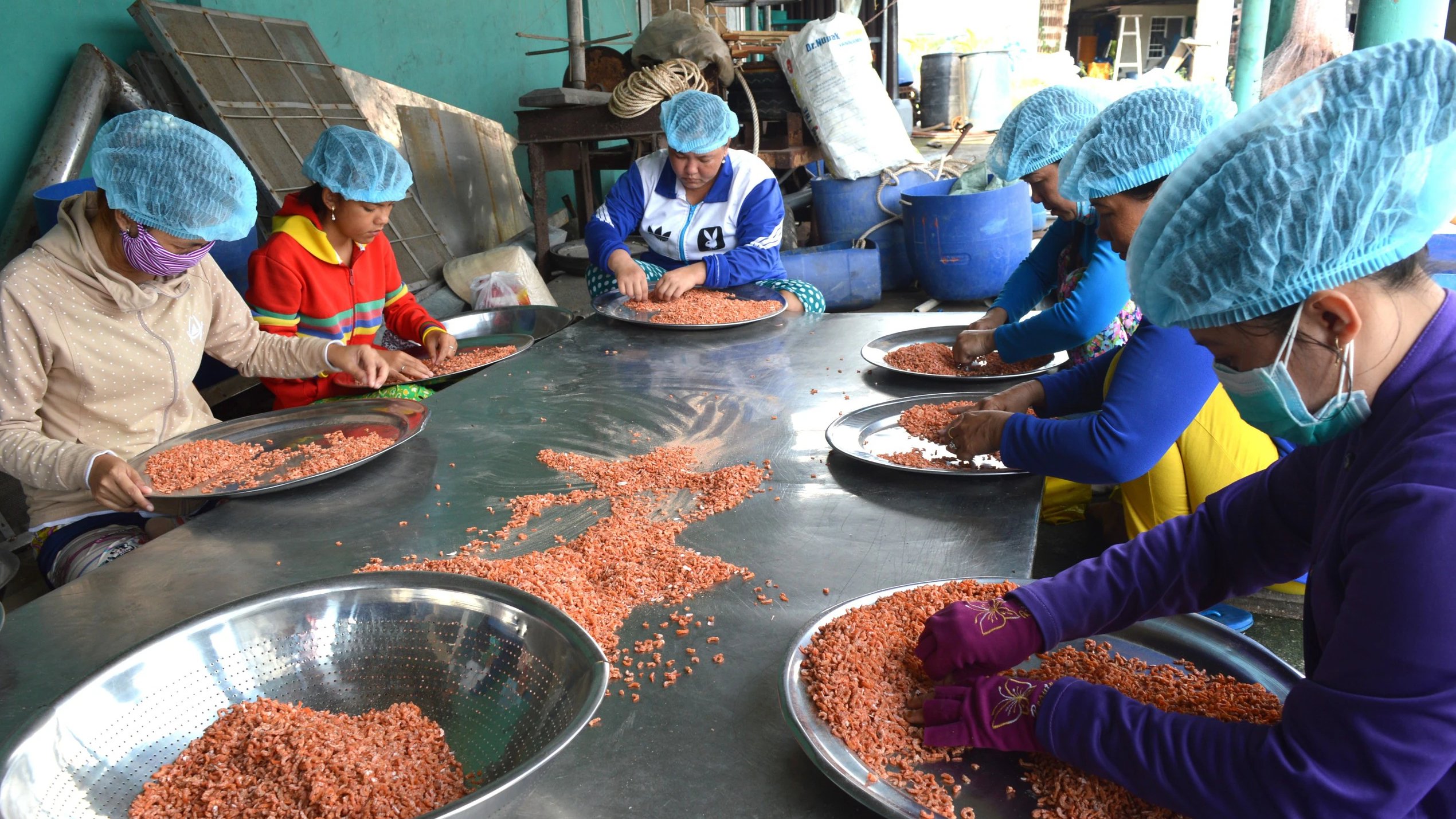
The traditional profession of making dried shrimp in Ca Mau has existed for a long time and has become a specialty known and sought after by many places.
Land of shrimp and fish
Ca Mau dried shrimp has a rich flavor, like a blend of the sweetness of the soil, the saltiness of the sea and the natural sunlight, creating a unique specialty of Ca Mau.
In the old days, when shrimp and fish were abundant in the river, one only had to reach out from inside the house to find food. The sampan was moored next to the house, submerged in water (to preserve it from the sun); when guests came to the house, they only had to shake the sampan to drain the water, and immediately they would get a lot of shrimp and fish…
Ca Mau is a land of "a lot of shrimp and fish" with shrimp resources being caught in excess and not being fully utilized. Due to the difficult conditions of trading and exchanging with other localities, local residents came up with a way to dry shrimp for long-term preservation. From there, the profession of making dried shrimp was formed.
The fishing and exploitation of raw shrimp in Ca Mau is not seasonal, but people exploit it all year round. However, for natural shrimp in rivers and canals, it is concentrated according to the monthly tides, each month has two tides: the full moon tide and the 30th tide of the lunar calendar.
Silver shrimp (silver shrimp) is a type of natural shrimp that is abundant in rivers and canals in Ca Mau. Silver shrimp, along with freshwater shrimp, is the most popular raw material for making dried shrimp and creates the highest quality product in Ca Mau.
Traditional methods of catching and exploiting shrimp in the wild from ancient times: Building traps, setting traps, raising nets, setting traps, fishing nets, setting bottom traps...
Currently, in Ca Mau, there are two forms of dried shrimp production. The traditional form of practice was born long ago, small-scale production with a family-based craft nature, and is still popular in localities with dried shrimp production.
Besides, there is also a modern practice with large-scale production according to technological lines combining machines and human labor.
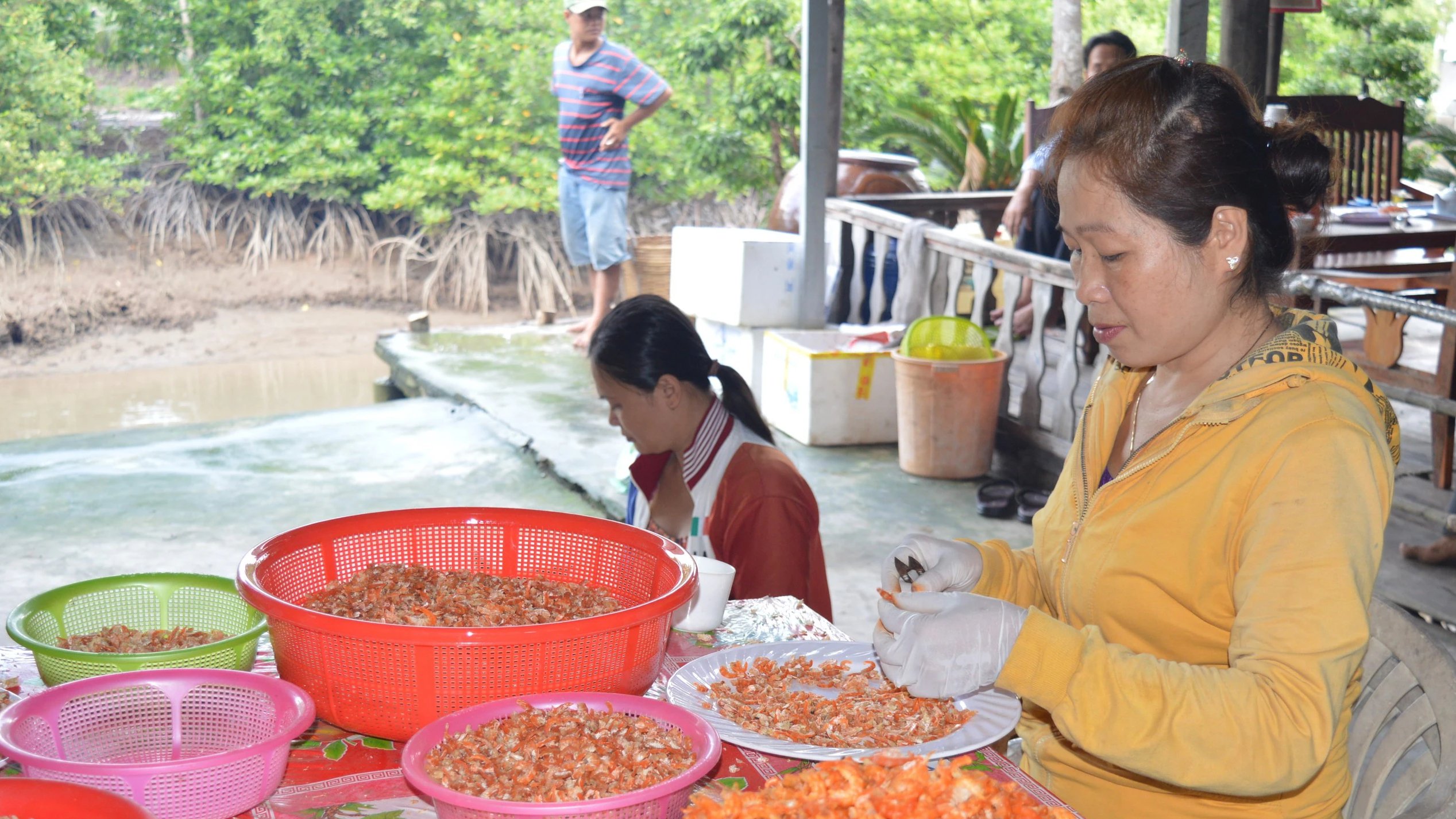
Making dried shrimp has three important steps: boiling shrimp, drying shrimp and peeling shrimp.
Three steps to make dried shrimp
The traditional dried shrimp making process has three main stages: Boiling the shrimp, after being caught, the shrimp will be selected and classified into different sizes, then the shrimp is put into a pot, pan (or lotus leaf pan) with moderate spices and boiled for about 10 minutes. After that, the shrimp must be taken out immediately and placed in a basket to drain and cool down, waiting to be dried.
Next is the stage of drying the shrimp. After boiling the shrimp, wait for the shrimp to cool naturally and then put it on the drying rack. The drying rack is usually made of natural wood and lined with bamboo strips, erected about 1.2m above the ground so that it is within reach of the person spreading the shrimp to dry. During the drying process, the shrimp must be turned over so that it turns evenly to the tail.
According to folk experience, if the weather is sunny and there is no sudden rain, a batch of boiled shrimp should be dried in the sun for three days to be dry enough and retain the elasticity and sweetness of the shrimp meat.
Finally, the shell is removed, which means that after drying in the sun, the dried shrimp are put into burlap sacks and beaten to remove all the shells. During the beating process, the shrimp must be skillful enough to remove the shells without breaking the shrimp. After the shells are removed, the dried shrimp will be put on a sieve to be sieved many times to separate the smooth shell and the intestines of the dried shrimp.
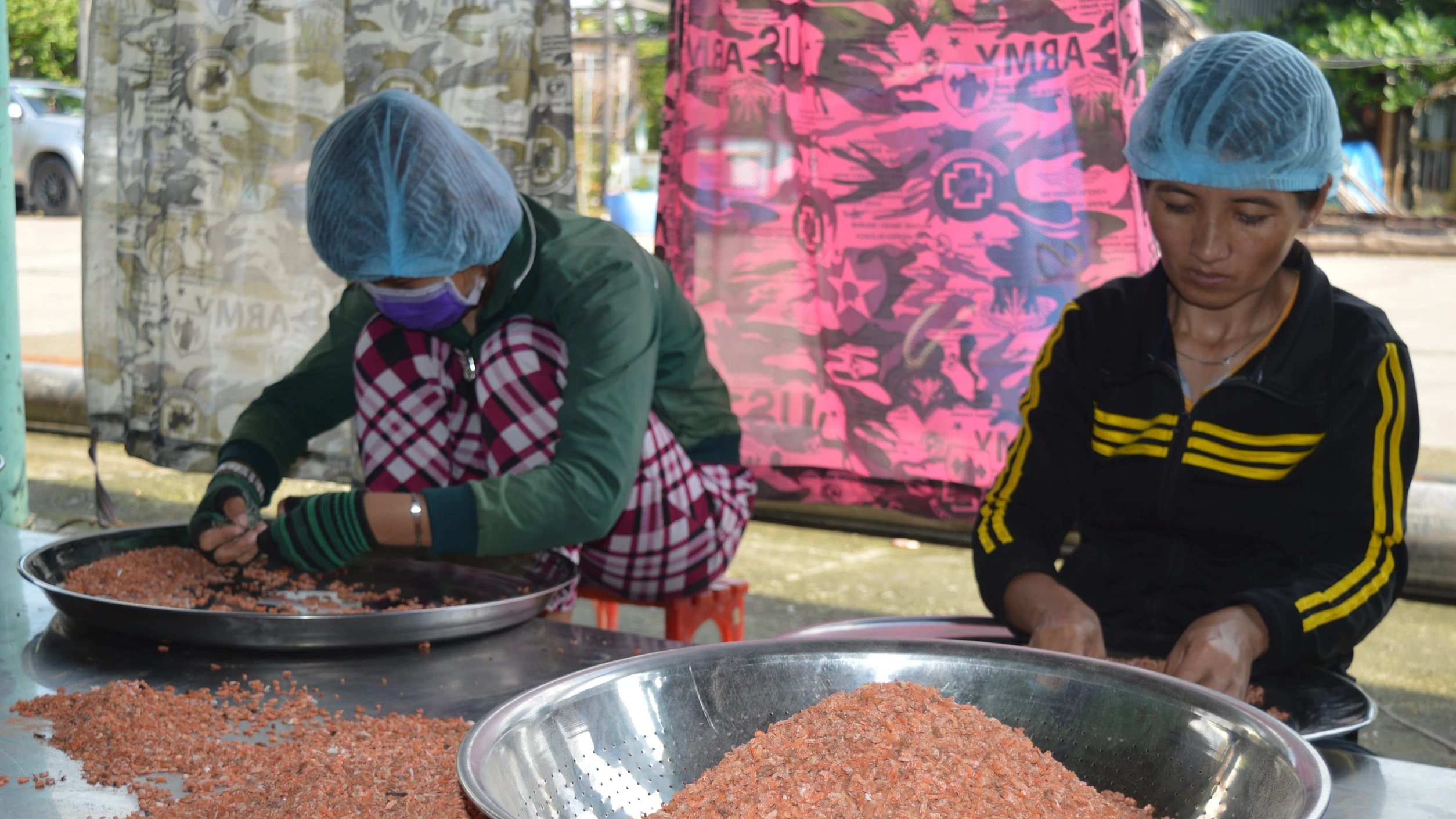
The dried shrimp industry creates jobs for thousands of local workers.
Dried shrimp is indispensable during Tet holiday.
According to the owner of a dried shrimp facility in Ngoc Hien district (Ca Mau province), the price of grade 1 dried shrimp is currently being sold at around 1.6 - 1.7 million VND/kg; grade 2 is around 1.4 - 1.5 million VND/kg. At this price, dried shrimp has increased by about 10% compared to normal days but there is always a shortage of supply.
According to those who have been making dried shrimp for a long time, the most important part of making dried shrimp is still the boiling step. While boiling, you have to keep the fire burning evenly, add salt to taste, and choose the right time to scoop out the shrimp to dry or dry.
If the shrimp is not boiled enough, it will quickly spoil, become moldy and lose its characteristic aroma. If it is overcooked, the shrimp will lose its sweetness, toughness and taste. If it is not dried enough, the shrimp will easily spoil and become moldy.
If dried too much, the shrimp will become hard or brittle, easily broken, easily discolored, and its economic value will decrease. On average, 10-12kg of raw shrimp can be processed into 1kg of finished dried shrimp.
Raw materials for making dried shrimp are of two types: river shrimp (silver shrimp, freshwater shrimp, giant tiger prawn, whiteleg shrimp, etc.) and sea shrimp (sea giant tiger prawn, iron shrimp, etc.). River shrimp gives better quality products and has higher economic value.
According to Mr. Tran Hieu Hung, Director of the Department of Culture, Sports and Tourism of Ca Mau province, the reason why Ca Mau dried shrimp is popular with many consumers is because Ca Mau shrimp grow in a fertile alluvial environment with lots of food, so the shrimp is sweet, firm and has a natural red color.
"Dried shrimp is a popular dish in Vietnamese family meals, because of its unique flavor, easy to prepare in many dishes, and can even be eaten right after buying the product without having to cook it again or prepare it elaborately.
During the Lunar New Year, dried shrimp mixed with pickled shallots or pickled cabbage has gradually become a traditional, indispensable dish, becoming a unique culinary culture of Ca Mau people," Mr. Hung shared.
According to Mr. Hung, currently, the dried shrimp making profession is still maintained and developed in localities in Ca Mau province, attracting and creating jobs for thousands of workers, supplying the market with dozens of tons of products each year.
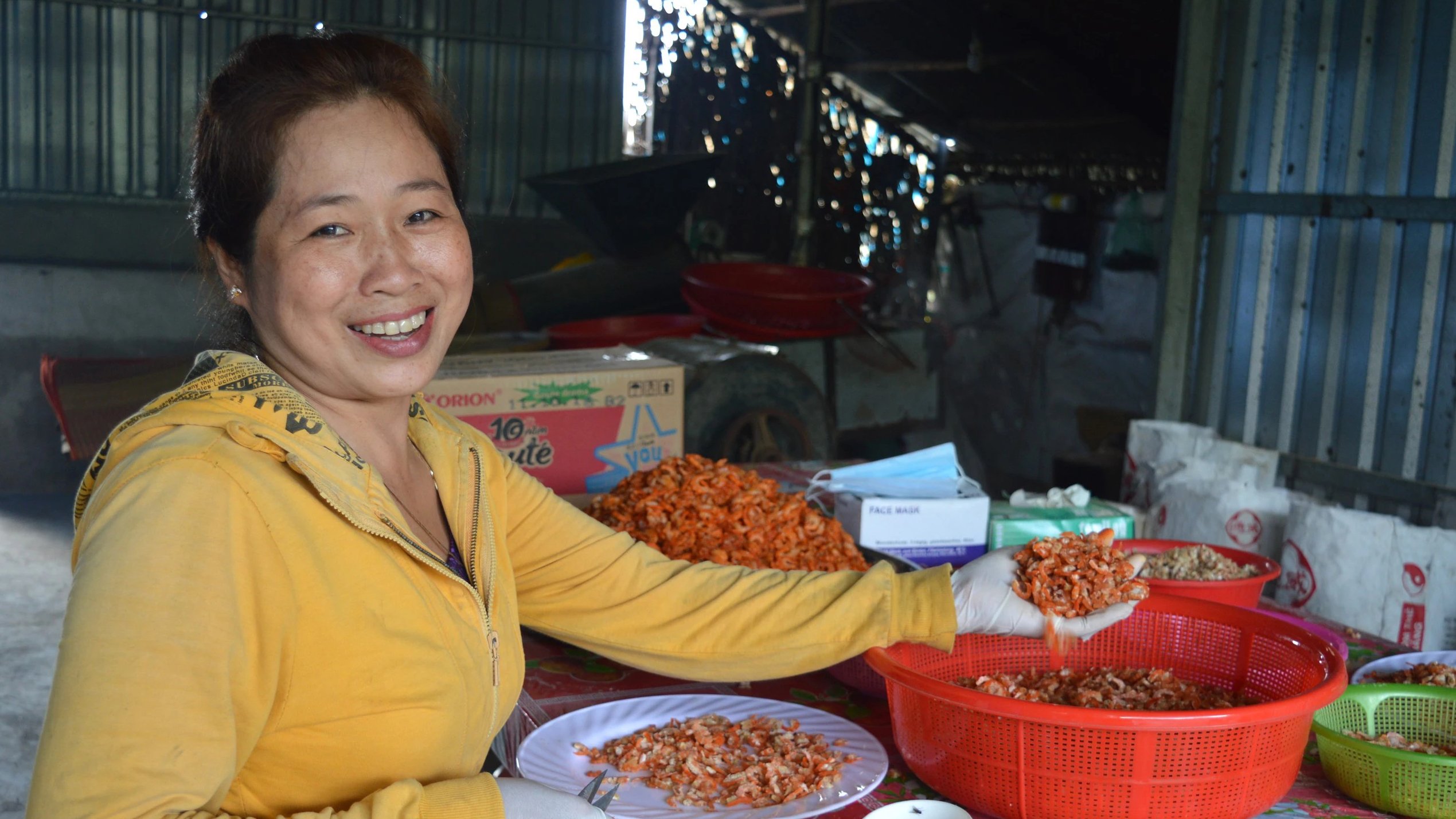
Ca Mau dried shrimp products are not only popular with the local community but also spread to many localities in the country and abroad such as: Korea, China, USA, France...
Create jobs for thousands of workers
Dishes made from dried shrimp can be prepared in a variety of ways such as instant dried shrimp, shredded pork floss, sour salad, soup, salted roasted dried shrimp, corn fried with dried shrimp, dried shrimp satay, dried shrimp braised in fish sauce...
For Ca Mau people, dried shrimp is a very familiar cooking ingredient in family meals. Ca Mau dried shrimp has become an attractive tourist product, attracting visitors from all over to enjoy.
Currently, Ca Mau dried shrimp products are not only popular with the local community but also spread to many localities in the country and abroad such as: Cambodia, Thailand, Laos, Korea, China, USA, France, Germany, Japan... Dried shrimp is also a dish prepared by many restaurants and eateries for customers.
According to Mr. Tran Hieu Hung, the development of the traditional profession of producing dried shrimp has affirmed the value of Ca Mau dried shrimp brand products, and also created jobs for local workers in their spare time.
"Ca Mau province currently has more than 100 dried shrimp production facilities from household to cooperative scale, creating jobs for thousands of workers. Ngoc Hien district alone has 200-300 workers, with a stable income of 4-6 million VND/month depending on the season, at peak times income can nearly double," Mr. Hung added.
In the coming time, Ca Mau province will continue to implement measures to protect and promote the value of the cultural heritage of dried shrimp making, such as having incentive and support policies to create conditions for the craft village to develop.
At the same time, train the community, support the development of dried shrimp making in localities in the province; focus on building traditional dried shrimp making villages towards sustainable development...
The dried shrimp industry is distributed throughout Ca Mau province, but is most concentrated in localities in the mangrove forest area, due to abundant raw materials, such as: Dam Doi, Phu Tan, Cai Nuoc, Ngoc Hien Nam Can.
In July 2011, Rach Goc dried shrimp was granted a collective trademark certificate by the Intellectual Property Office.
In 2016, Rach Goc dried shrimp was certified by the Vietnam Center for Science, Technology and Rural Development as a product meeting the criteria of "Famous Vietnamese Agricultural Product".
On November 10, 2023, the Minister of Culture, Sports and Tourism signed a Decision on the announcement of the List of national intangible cultural heritage "Traditional crafts, Folk knowledge of dried shrimp making in Ca Mau province".
Source







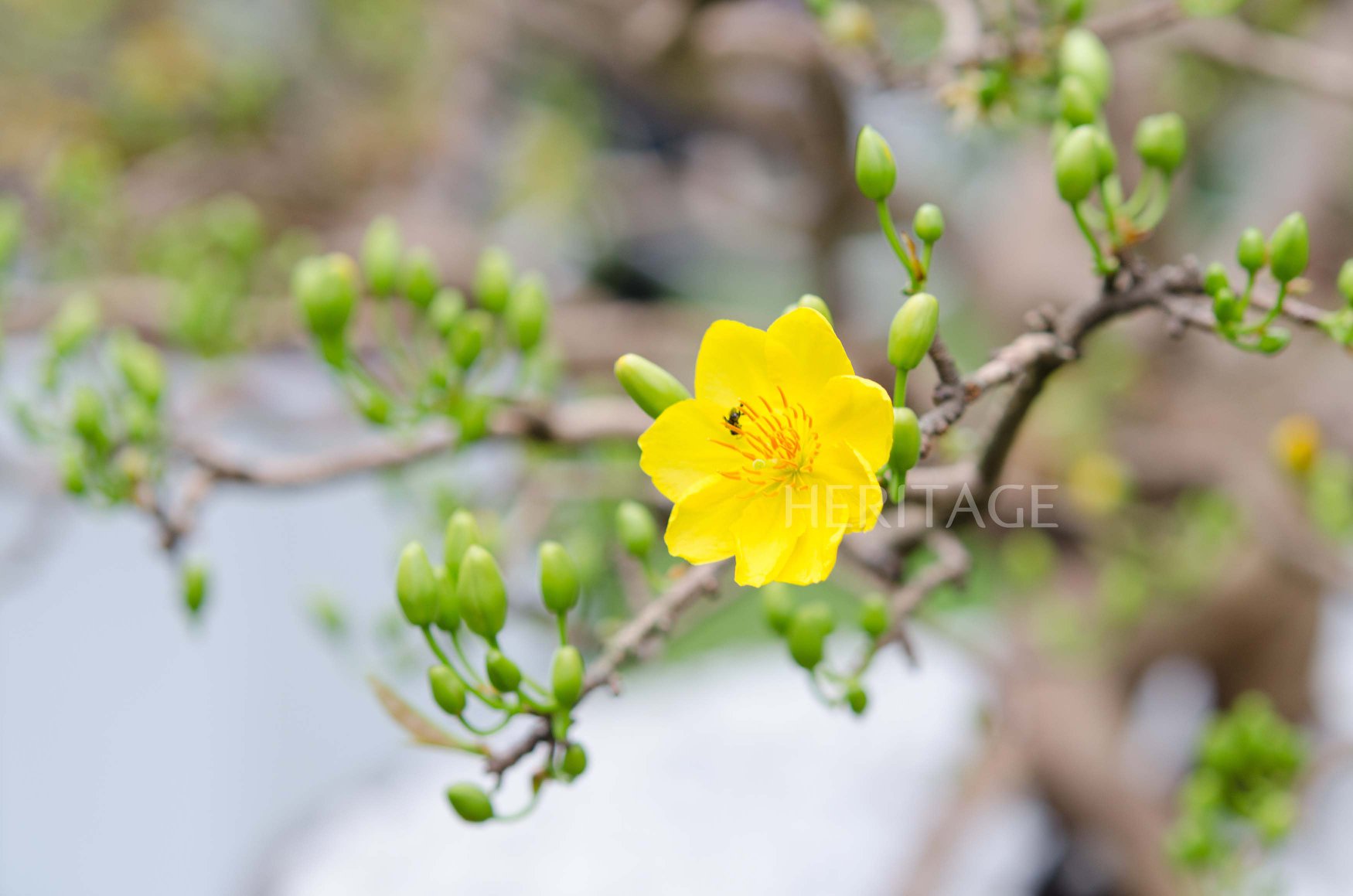














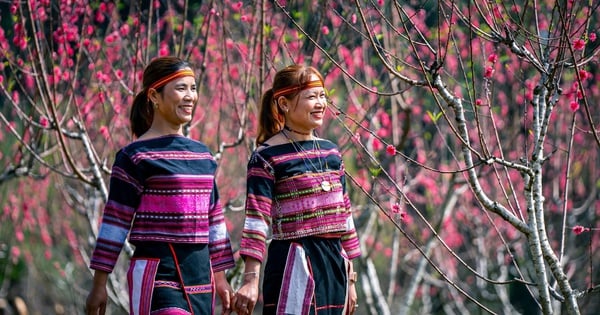



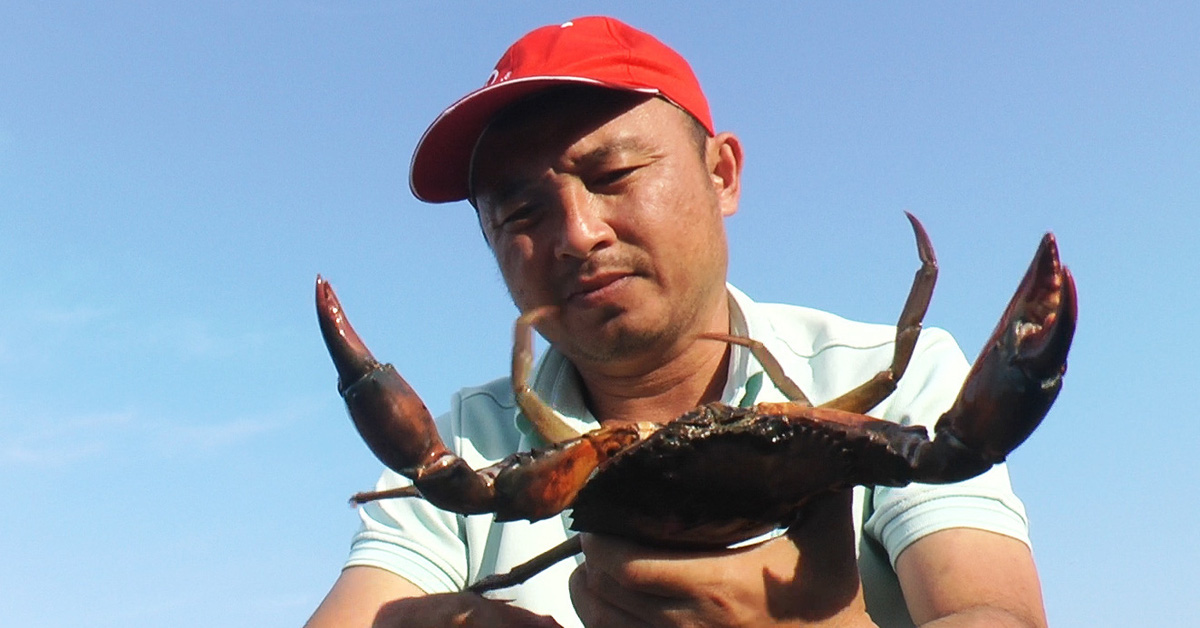


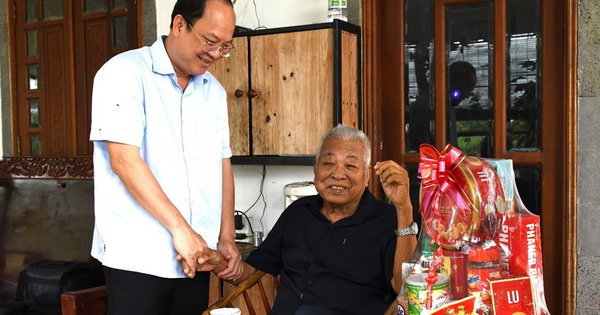




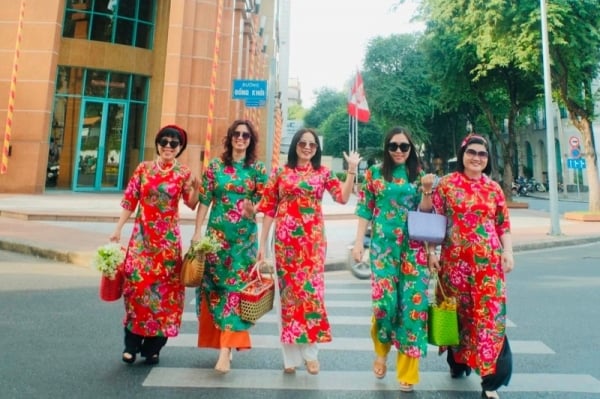
























Comment (0)